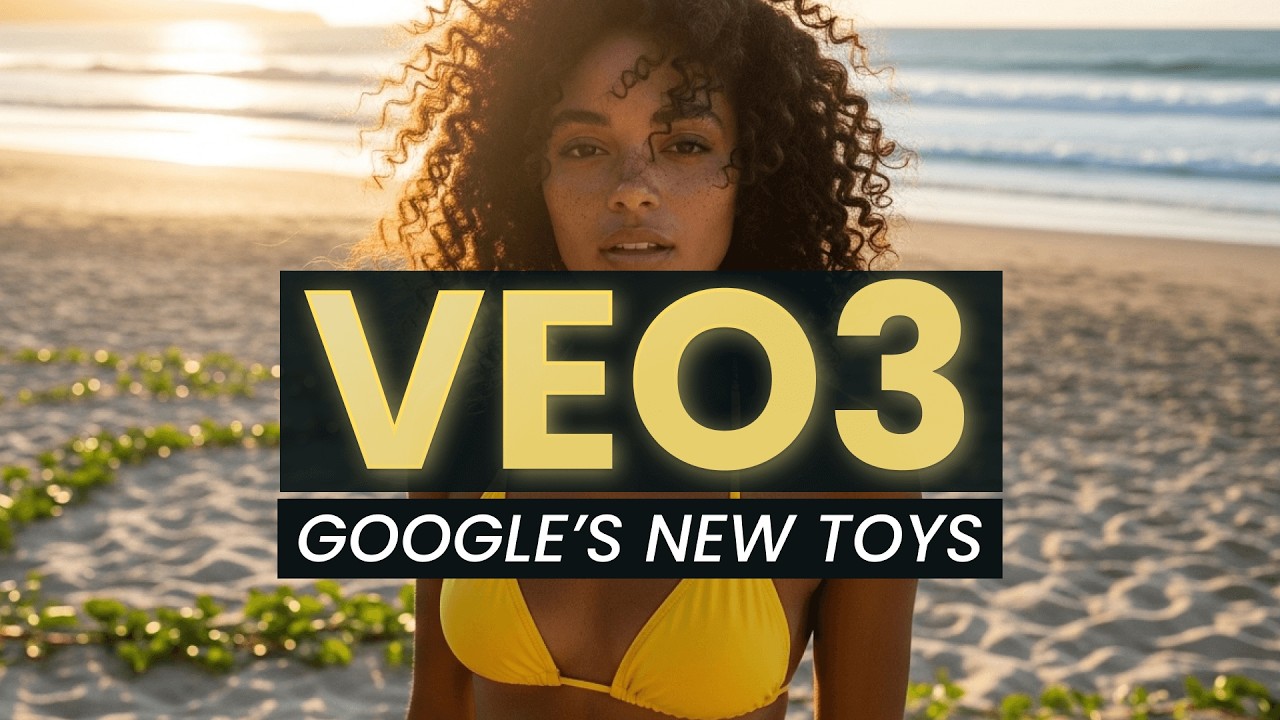Google has unveiled powerful new AI models, including VEO 3 for highly realistic, synchronized video generation with advanced control features, and Imagine 4 for detailed, high-resolution image creation, alongside tools like Lyra 2 for music and Project Astra for AI assistants. These innovations showcase Google’s expanding capabilities in multimedia AI, enabling more immersive, creative, and precise content production across various domains.
Google has announced a series of groundbreaking AI updates, with the highlight being their new video generation model, VEO 3. This model can produce high-quality videos with synchronized audio, speech, sound effects, and music all from a single prompt. It demonstrates impressive capabilities such as lip-syncing, realistic sound design, and detailed scene rendering, making it a significant step forward in unifying multiple media types into cohesive AI-generated content. Examples showcased include cinematic scenes with lifelike movements, intricate details, and seamless transitions, highlighting the model’s potential for cinematic and creative applications.
VEO 3 also introduces advanced control features, including precise camera controls, object manipulation, and outpainting, which allows expanding videos beyond their original frame. These tools enable creators to craft complex scenes, modify existing footage, and generate content in various aspect ratios, opening new possibilities for VR and immersive media. Additionally, the model’s ability to remove unwanted objects and generate animated sequences with detailed secondary characters enhances its utility for filmmakers and digital artists. The model’s improved prompt adherence ensures more accurate scene creation, even with complex actions and dynamic environments.
Alongside VEO 3, Google has enhanced their V2 video model, adding features for better control and consistency. Users can upload reference images and styles to maintain character and scene continuity across shots, which is crucial for storytelling and character-driven projects. The introduction of camera controls allows for precise framing and movement, while features like first-and-last frame transitions enable seamless scene changes. These updates make the V2 model more versatile and powerful, especially for professional content creators seeking detailed control over their AI-generated videos.
Google’s latest image model, Imagine 4, is also showcased as a powerful tool for generating highly detailed and realistic images. Accessible for free through platforms like Whisk, Imagine 4 produces images with impressive clarity, though some critique its tendency toward generic or oversaturated outputs compared to more artistically evocative models like Midjourney. The model supports various prompts, aspect ratios, and parameters, making it suitable for diverse creative tasks such as product design, comic strips, and realistic portraits. Its ability to generate up to 2K resolution with fine details makes it a valuable asset for visual content creation.
Finally, Google has introduced new AI tools across different domains, including Lyra 2 for music composition, Google Beam for lifelike 3D video conferencing, and Project Astra, an AI assistant capable of understanding complex environments. They also previewed AI glasses with integrated cameras and microphones, and tools for detecting AI-generated media. These developments demonstrate Google’s comprehensive push into AI-powered multimedia and interactive experiences, positioning them as a leader in the AI race. The video concludes with a nod to upcoming innovations from competitors like Apple, emphasizing the rapid evolution of AI technology and its vast creative and practical potential.
